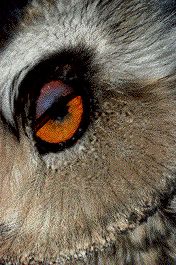Mimicry

Mimicry is the case in which one species looks similar to another species. There are two different types:
Batesian mimicry in which one non-poisonous species mimics another poisonous species. For example, the tiger swallowtail Papilio glaucus is distributed across North America, but in part of the species' range, roughly to the south-east of a line from Massachusetts to south Minnesota and from east Colorado to the Gulf Coast, there is a form of the species called the Papilio nigra which is not poisonous itself but mimics another species, the poisonous pipevine swallowtail. The Papilio nigra is therefore well protected in this area from predatory birds.
Batesian mimicry is an example of negative frequency dependent selection
Mullerian mimicry occurs when two poisonous species evolve to look like each other. The advantage to each species is that a proportion of the sacrifice in educating predators is shared with the other species.
The image opposite is of the owl butterfly. This species mimics the appearance of an owl to ward off predators.
| Next |



